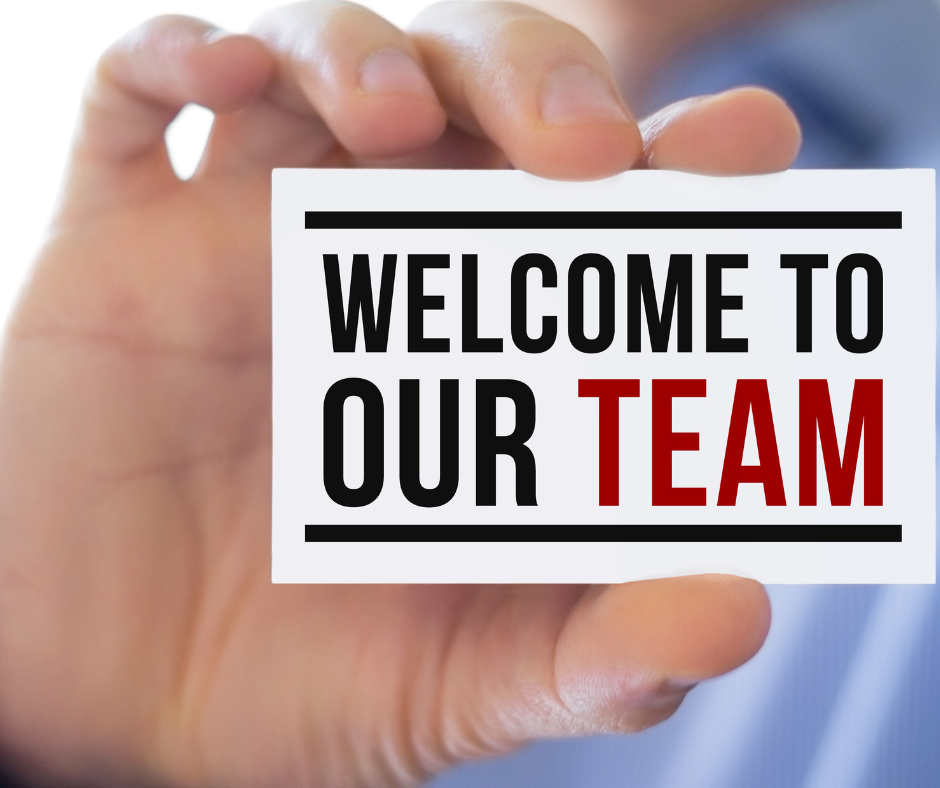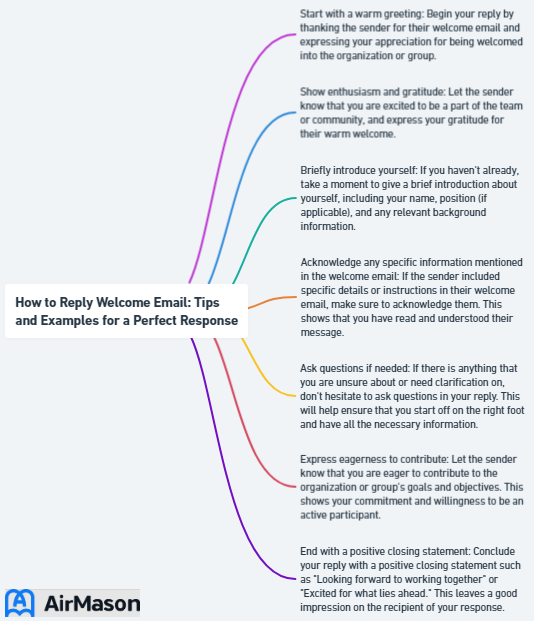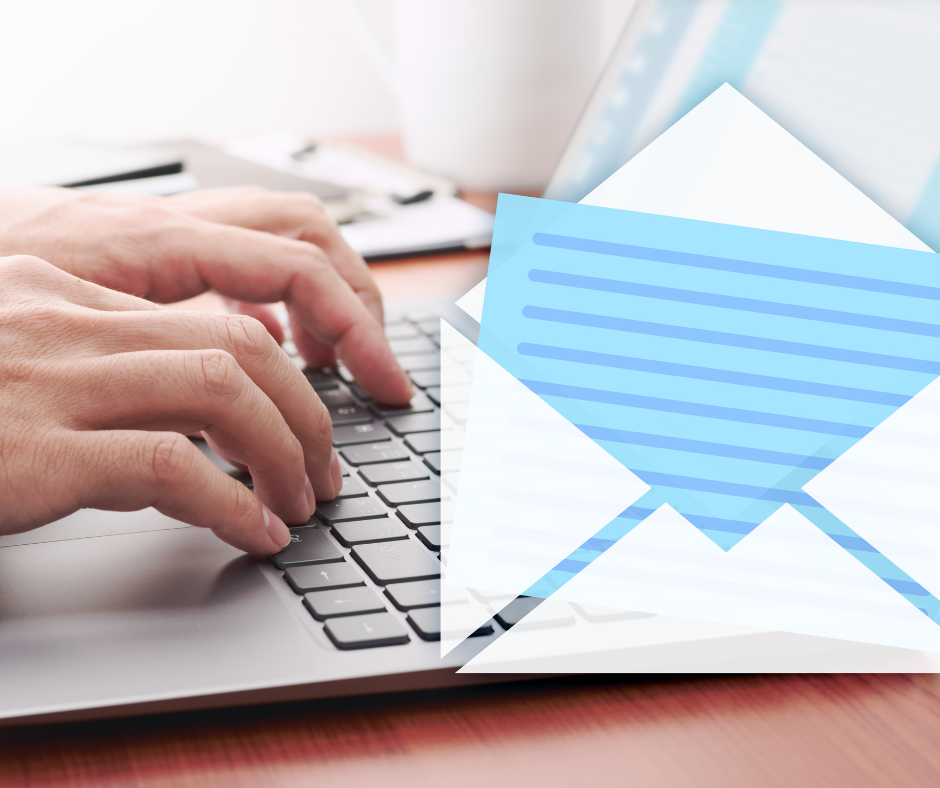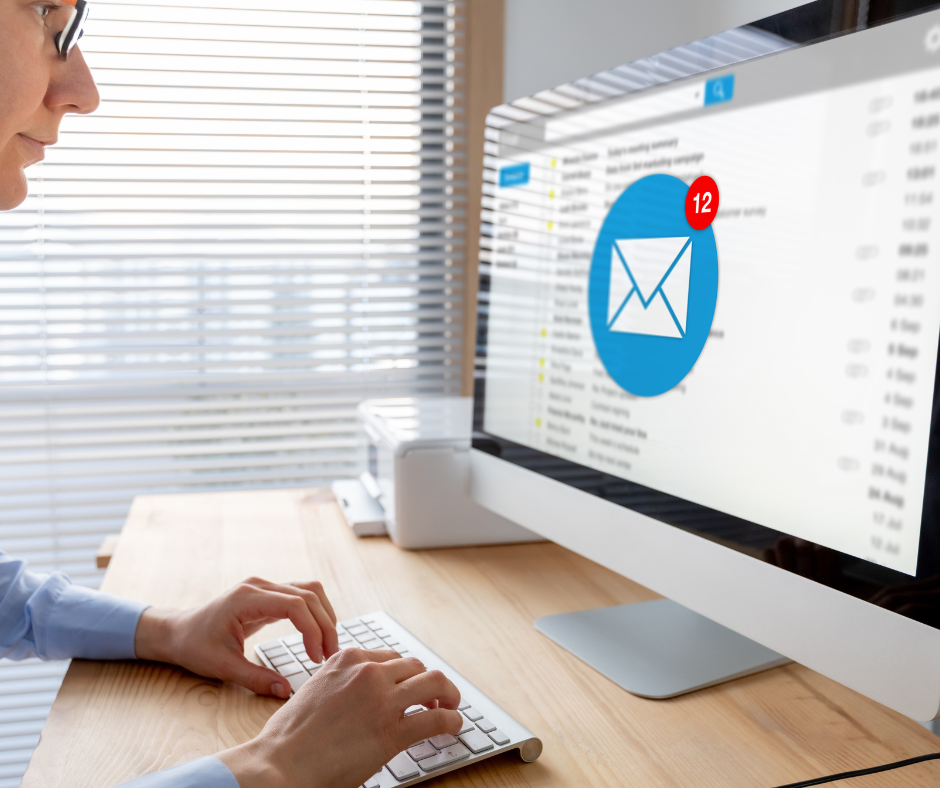
Has a welcome email from your new employer or colleague ever left you wondering how to respond? It’s important to consider the tone, enthusiasm, and professionalism of your reply. A well-crafted response can set a positive first impression and pave the way for future interactions. In this blog post, we’ll guide you through the process of “how to reply welcome email” with tips, examples, and advice to ensure your response leaves a lasting impression.
Key Takeaways
- Express gratitude, enthusiasm and professionalism when responding to a welcome email.
- Show appreciation for the warm welcome message and display enthusiasm for the new job.
- Tailor your response in a professional manner while avoiding overly long responses, excessive flattery or informality and poor grammar.
Crafting a Gracious Response to a Welcome Email
When you respond to a welcome email, it’s your chance to make a great first impression by expressing gratitude, enthusiasm, and professionalism. Our employee handbook examples provide guidance on crafting professional emails. This first interaction can shape future ones and foster a positive relationship with your new employer, colleagues, and team. Therefore, balance these three elements in your response to a welcome.

Show Appreciation for the Warm Welcome
Start by expressing your gratitude to your team, colleagues, or boss for such a warm welcome. This is a thoughtful gesture that demonstrates your appreciation and helps create a positive work environment. You can use phrases like “Thank you for the warm welcome message” or “I appreciate your kind words” to convey your gratitude. Keep in mind that sincerity is key; a genuine expression of thanks can go a long way in fostering connections with your new team members.
Moreover, expressing appreciation in your response also shows that you value the sender’s effort and time in welcoming you. Using an employee handbook builder can help ensure you craft appropriate, professional responses.This simple act can help set the stage for strong professional bonds and lay the foundation for a supportive and collaborative work environment.
Display Enthusiasm for the New Job

Also, let your response reflect your excitement about your new role and eagerness to contribute to the team. This enthusiasm can be contagious and help create a positive atmosphere, as your new colleagues will be reassured that you’re looking forward to working with them. And that’s fantastic news for everyone involved. In fact, it’s wonderful news for the entire team.
For example, you can say, “I’m thrilled to be joining the team and can’t wait to start contributing to our shared goals” or “I’m eager to learn from my new colleagues and bring my expertise to the table.” Demonstrating your excitement and willingness to be a team player will not only leave a good impression but also pave the way for productive collaborations in the future.Maintain Professionalism in Your Reply
While showing appreciation and enthusiasm in your response, remember to keep a professional tone. Our best employee handbook software has templates and guidance for crafting professional communications. Avoid using slang, excessive punctuation, or overly casual language. Instead, opt for a balanced tone that conveys warmth and professionalism.
Maintaining a professional demeanor in your response helps to strike the right balance between appreciation and courtesy, keeping the focus on the subject. This will create a positive impression on your new employer, colleagues, and team, setting the stage for a successful working relationship.
Welcome in the Team
We are delighted to extend a warm welcome in the team to our newest member! Your presence marks an exciting new chapter for us, and we are eager to embark on this journey together. “Welcome in the team” is not just a phrase; it embodies our collective enthusiasm to have you on board. Your unique skills, experiences, and perspective are invaluable assets that will undoubtedly contribute to our shared goals and projects.
As you settle in, please know that you are surrounded by a supportive and collaborative environment. Our team is known for its camaraderie, and we encourage open communication and idea-sharing. Feel free to ask questions, offer suggestions, and share your insights. To ensure you’re always at your best, consider exploring products like sleep masks to enhance your rest and productivity. Buying a sleep mask (купить маску для сна) can be a simple yet effective way to improve your daily focus and well-being. Your voice matters, and we are here to ensure you feel empowered and valued.Tailoring Your Response to Different Senders

Different senders of a welcome email might have varying expectations and preferences. Hence, tailor your response accordingly, be it to your boss, colleague, or HR representative.
This will help you create a more personalized and meaningful connection with each individual.Responding to a Welcome Email from Your Boss
When replying to a welcome email from your boss, adopt a professional, appreciative, and enthusiastic tone. Thank them for the warm welcome and the opportunity to join the team, and express your excitement to meet them at the next corporate meeting or event. By doing so, you demonstrate your commitment to the new role and your eagerness to contribute to the team’s success. Welcome aboard!
Also, keep a professional tone and steer clear of overly casual or formal language. This will help you strike the right balance between respect and approachability, creating a positive impression on your new boss and setting the stage for a productive working relationship.
Replying to a Colleague’s Welcome Message
When responding to a colleague’s welcome message, use a friendly and supportive tone. Express enthusiasm for the new job and appreciation for their warm welcome. Additionally, demonstrate your willingness to collaborate and offer support by acknowledging their role in the team, such as “I’m looking forward to learning from your expertise as our team’s project manager.”By showing that you’re eager to work together and support your colleagues, you’ll create a positive and collaborative atmosphere, fostering strong professional bonds and forging lasting connections with your new team members.
Addressing a Welcome Email from HR
When replying to a welcome email from HR, be professional and courteous. Here are some tips:
- Thank them for the warm welcome and the opportunity to join the team.
- Express your excitement for the new role.
- Show that you’re eager to learn, grow, and contribute to the company’s success.
By demonstrating your enthusiasm and professionalism in your response to HR, you’ll create a positive impression and help set the stage for a smooth onboarding process. Additionally, it shows that you value their support and guidance, which can contribute to a successful start in your new role.
First Day Email to Manager
Sending a well-crafted first day email to your manager is a crucial step in making a positive impression from the outset. This initial communication sets the tone for your professional relationship and showcases your enthusiasm for the new role. In the email, it’s essential to express your gratitude for the opportunity while also outlining your plan for the first day. Address any logistical details such as start time, location, and any specific documents or materials you might need. Additionally, it’s a good idea to reiterate your excitement about joining the team and highlight any preparations you’ve made to ensure a smooth transition into the role. Remember, this email serves as the foundation for your professional interactions, so be sure to strike a balance between professionalism and approachability.
Avoiding Common Mistakes in Your Response

Some common pitfalls to avoid include overly long responses, excessive flattery or informality, and poor grammar. By steering clear of these mistakes and focusing on delivering a concise, genuine, and professional message, you’ll set yourself up for success in your new role.
Overly Long Responses
Ensure your response is concise and focused, without lengthy paragraphs or unnecessary details. Excessive information can be overwhelming and dilute the main points you’re trying to convey. Instead, prioritize the most important elements, such as expressing gratitude, enthusiasm, and professionalism, and ensure that your message remains clear and easy for the recipient to comprehend.Excessive Flattery or Informality
Avoid excessive flattery or informality in your response to a welcome email. While it’s important to show appreciation and enthusiasm, it’s equally crucial to maintain a professional tone. Exaggerated compliments or casual language can come across as insincere or unprofessional, compromising your credibility and potentially damaging your working relationships.Instead, opt for a balanced approach that conveys warmth and professionalism, leaving a lasting positive impression.
How to Engage with Your New Team Through Welcome Emails

Welcome emails, also known as welcome mail, are a great platform to interact with your new team member and start building rapport. By asking appropriate questions and offering support, you can demonstrate your commitment to being a team player and foster a collaborative work environment.
Don’t be afraid to ask relevant questions about your new role, team dynamics, or upcoming projects. However, be patient and prioritize your queries, as your colleagues or HR may be busy and unable to address all your concerns immediately. By showing genuine interest and willingness to learn, you’ll contribute to a positive onboarding experience for both yourself and your new colleagues.Asking Appropriate Questions
If you have questions in your welcome email response, make sure they’re relevant to your new role or the team dynamics. This demonstrates your commitment to understanding your new position and contributing effectively to the team’s success. Be patient and prioritize your queries, understanding that your new colleagues may be busy and unable to provide immediate responses.Offering Support and Collaboration
As you join our company, we want to highlight your readiness to collaborate and extend support to the entire team, including becoming a valuable team member. This can involve expressing your eagerness to help with upcoming projects or providing your expertise in specific areas.
By demonstrating your commitment to teamwork and cooperation, you’ll foster a supportive and collaborative work environment, paving the way for productive professional relationships.
Examples of Effective Welcome Email Responses
Here are a few examples that effectively demonstrate appreciation, enthusiasm, and professionalism in welcome email responses:
Example 1: “Dear [Boss’s Name], Thank you for the warm welcome! I’m truly excited to be joining the team and can’t wait to start contributing to our shared goals. Your support has made my transition into this new role much smoother, and I’m looking forward to meeting you in person at our next corporate meeting. I appreciate the welcome letter you sent as well. Best regards, [Your Name]”
Example 2: “Hi [Colleague’s Name], I appreciate your kind words and the friendly welcome to the team. I’m eager to start working with you and learn from your expertise as our team’s project manager. Please don’t hesitate to reach out if there’s anything I can assist you with. Looking forward to our first meeting! Best, [Your Name]”
Example 3: “Dear HR Team, Thank you for the warm welcome and all the information you have provided. I’m thrilled to be joining the company and look forward to contributing to our success. If there’s any further information or documentation you require, please let me know. Best regards, [Your Name]”
Intro for New Employee
The “Intro for New Employee” process is a crucial step in ensuring a seamless transition into our company. It serves as the initial gateway for you to familiarize yourself with our organization, its culture, and the team you’ll be working with. During this introduction, you will have the opportunity to meet key members of the team, learn about our company’s mission and values, and gain insights into your specific role and responsibilities. Additionally, you’ll receive essential information about our policies, procedures, and resources available to support your success. We understand that starting a new role can be overwhelming, and we are committed to providing you with all the necessary tools and support to help you thrive in your new position. Welcome aboard, and we look forward to embarking on this exciting journey together!
Summary
In conclusion, crafting an effective response to a welcome email is essential for setting a positive first impression and establishing good relations with your new employer, colleagues, and team. By showing appreciation, enthusiasm, and professionalism in your response, you’ll set the stage for a successful onboarding experience and pave the way for productive future interactions. Remember to tailor your response to different senders, avoid common mistakes, and engage with your new team through welcome emails. With these tips and examples in mind, you’re well on your way to making a lasting positive impression in your new role.